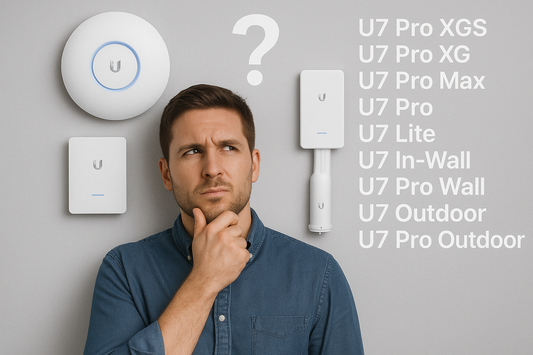Network Switches: A Comprehensive Guide from Unmanaged, Smart, L2/L3 to L7 Managed

Introduction
In today’s connected world, the backbone of any efficient network is the type of switch it utilizes. From Unmanaged to L7 Managed switches, each type plays a pivotal role in network management and efficiency. This article delves into the intricacies of these switches, comparing their benefits, limitations, and compliance aspects.
Detailed Overview of Network Switch Types
Unmanaged Switch
- Features: Basic connectivity, no configuration needed.
- Pros: Simple to use, no technical knowledge required.
- Cons: No control over network traffic, limited functionality.
- Ideal For: Small home networks, basic setups with minimal devices.
Easy Smart Switch
- Features: Basic L2 features, manageable via Utility/Web interface.
- Pros: User-friendly, cost-effective.
- Cons: Limited functionality compared to fully managed switches.
- Ideal For: Small businesses or home offices requiring slight network management.
Smart Switch
- Features: Advanced L2 features, manageable via multiple interfaces.
- Pros: Better control over network, supports VLAN and QoS.
- Cons: Not suitable for complex network setups.
- Ideal For: Growing businesses needing more control but not full L2/L3 features.
L2 Managed Switch
- Features: Full L2 management capabilities, CLI for advanced control.
- Pros: Extensive feature set, robust security and VLAN support.
- Cons: Can be complex to configure and manage.
- Ideal For: Networks requiring detailed control and segmentation.
L3 Managed Switch
- Features: L2 features plus routing capabilities.
- Pros: Enables inter-VLAN routing, advanced security.
- Cons: More expensive and complex than L2 switches.
- Ideal For: Larger organizations with complex network infrastructures.
L4 Managed Switch
- Features: Traffic control based on TCP/UDP port information.
- Pros: Advanced QoS, better traffic management.
- Cons: Requires in-depth network knowledge.
- Ideal For: Networks with high demands for traffic prioritization.
L7 Managed Switch
- Features: Deep packet inspection, application-level awareness.
- Pros: Highest level of traffic management and security.
- Cons: High cost, complex management.
- Ideal For: Enterprise-level networks with sophisticated security and traffic control needs.
Compliance and Application Scenarios
Network switches must comply with various standards like IEEE, ensuring interoperability and safety. Compliance is particularly crucial in sectors like healthcare, finance, and government, where data security and reliability are paramount.
- Unmanaged and Easy Smart Switches are perfect for small-scale deployments where compliance and advanced features are not critical.
- Smart Switches find their place in environments needing a balance between simplicity and network control without stringent compliance needs.
- L2 and L3 Managed Switches are suited for networks that must adhere to strict compliance standards, offering enhanced security features.
- L4 and L7 Managed Switches are ideal for highly regulated industries, where data traffic needs to be meticulously managed and secured.
Comparative Analysis Table
The following table offers a side-by-side comparison of the different network switches:
| Switch Type | Management Level | Key Features | VLAN Support | Routing Capability | Ideal Use | Compliance Considerations |
|---|---|---|---|---|---|---|
| Unmanaged | None | Basic connectivity | None | None | Small/home networks | Low |
| Easy Smart | Basic | Basic L2 features | Basic | None | Small businesses, SOHO | Moderate |
| Smart | Intermediate | Advanced L2 features, multiple management interfaces | Advanced | None | Small/Medium businesses | Moderate |
| L2 Managed | Advanced | Full L2 features, CLI | Advanced | None | Detailed control networks | High |
| L3 Managed | Advanced | L2 features plus routing | Advanced | Yes | Large business networks | High |
| L4 Managed | Advanced | TCP/UDP port-based traffic control | Advanced | Yes | Layer 4 traffic prioritization | Very High |
| L7 Managed | Very Advanced | Deep packet inspection, application-level control | Advanced | Yes | Complex enterprise networks | Very High |
Conclusion
Choosing the right network switch depends on your network’s scale, complexity, and specific requirements. While Unmanaged and Easy Smart Switches offer simplicity and ease of use for small setups, Smart, L2, L3, L4, and L7 Managed Switches provide advanced features and control for more intricate and demanding network environments. Understanding each type’s capabilities ensures that your network is not only efficient but also compliant with industry standards.
No comments







0 comments